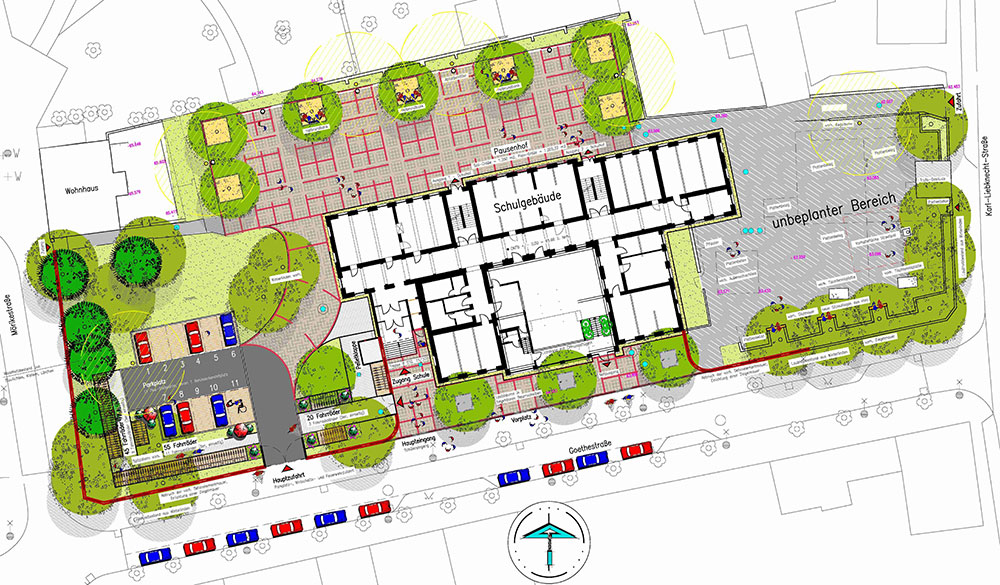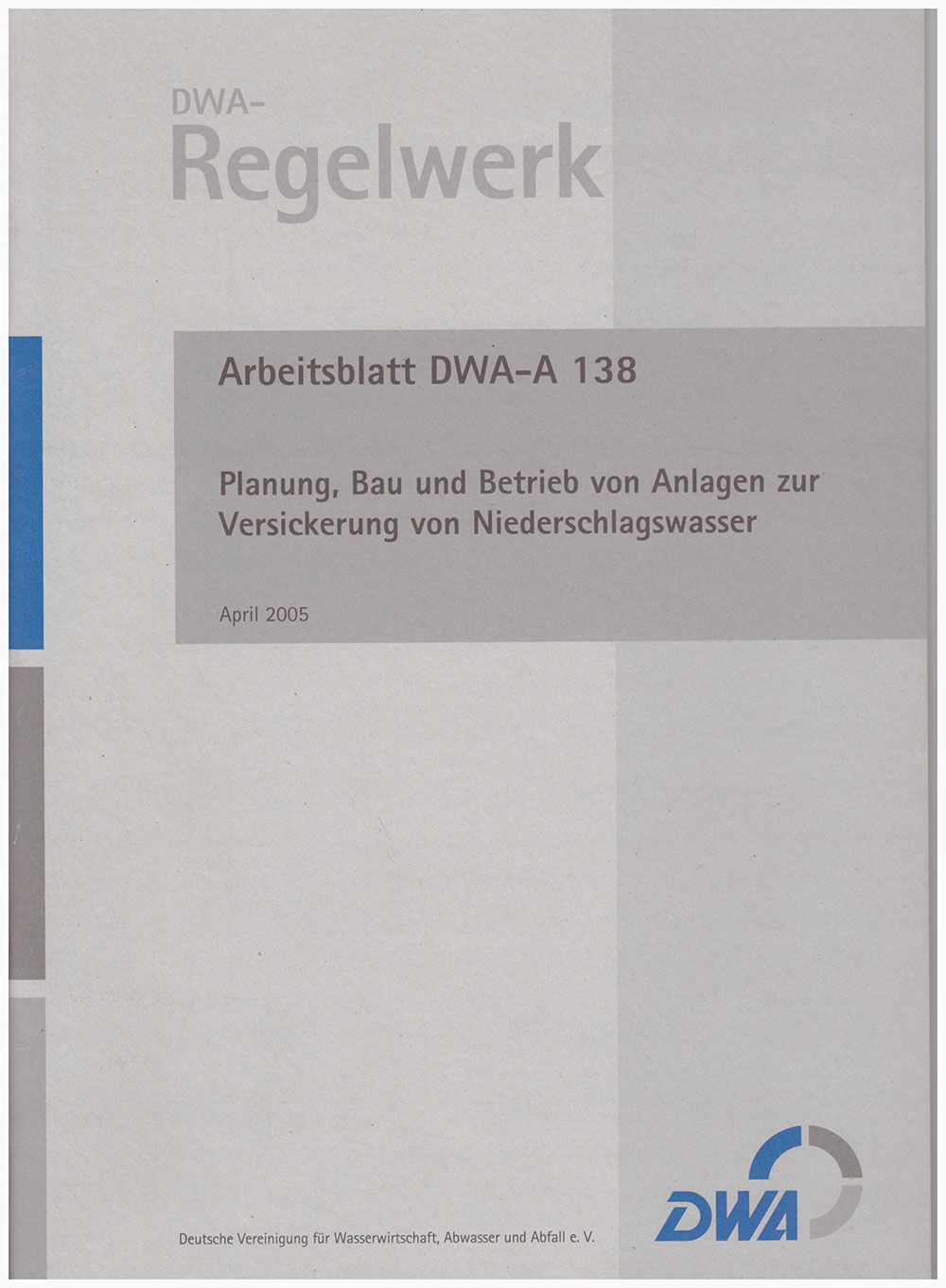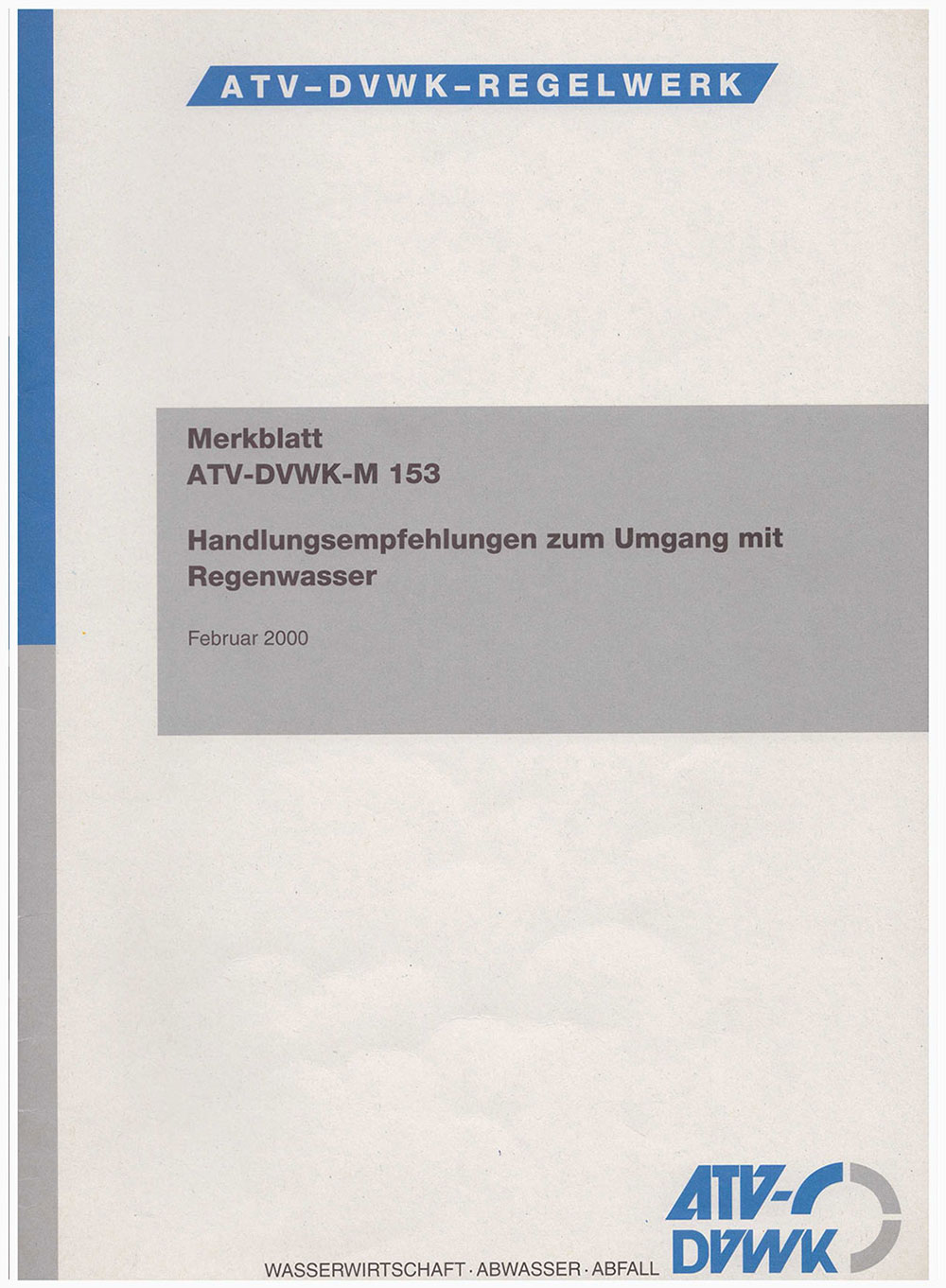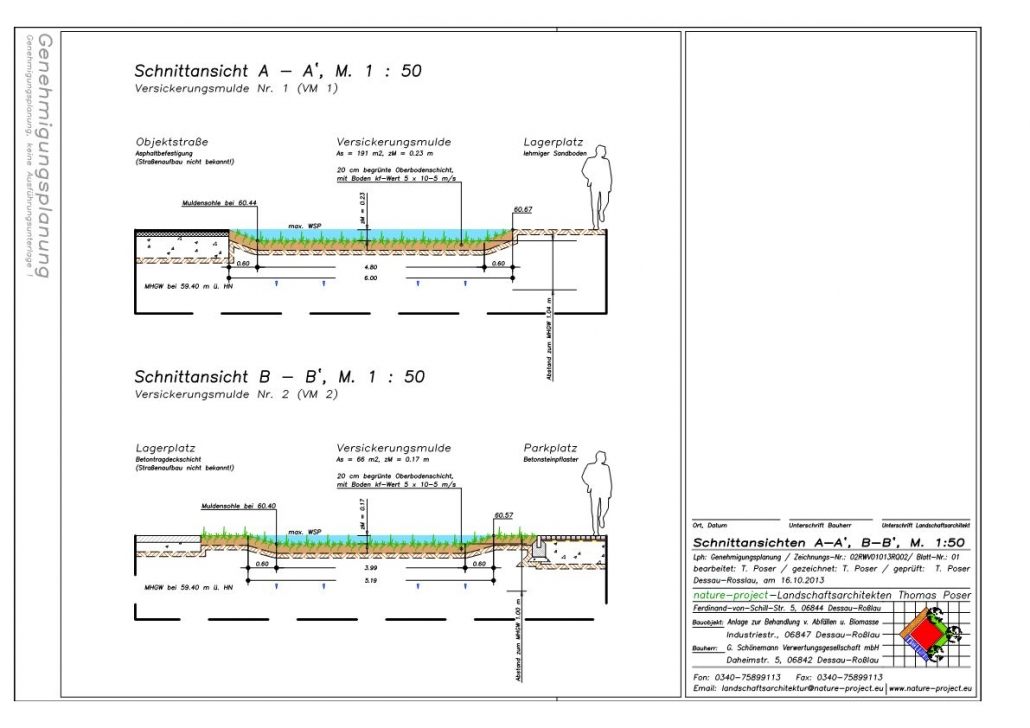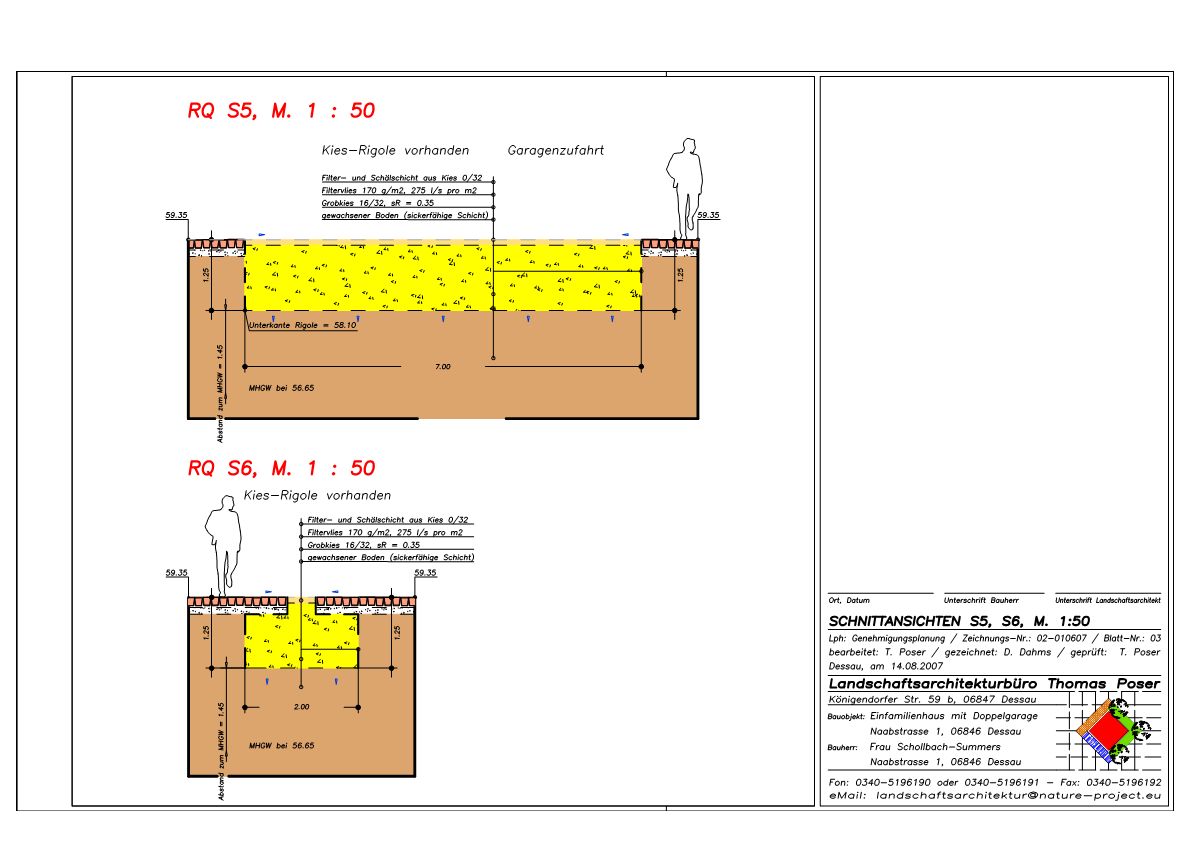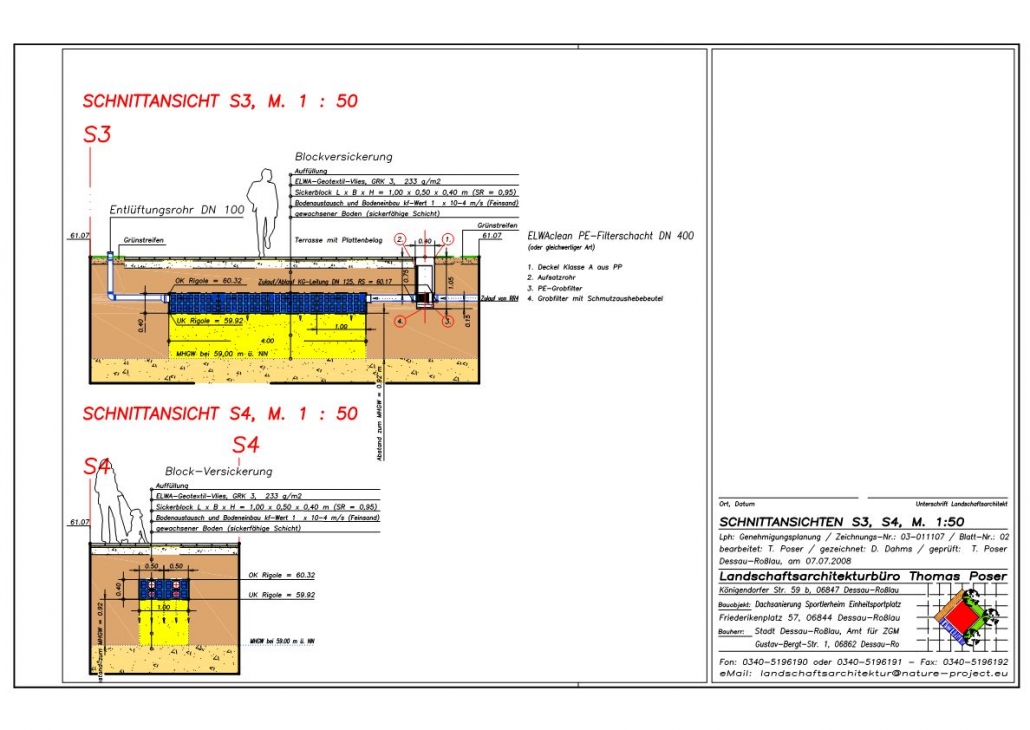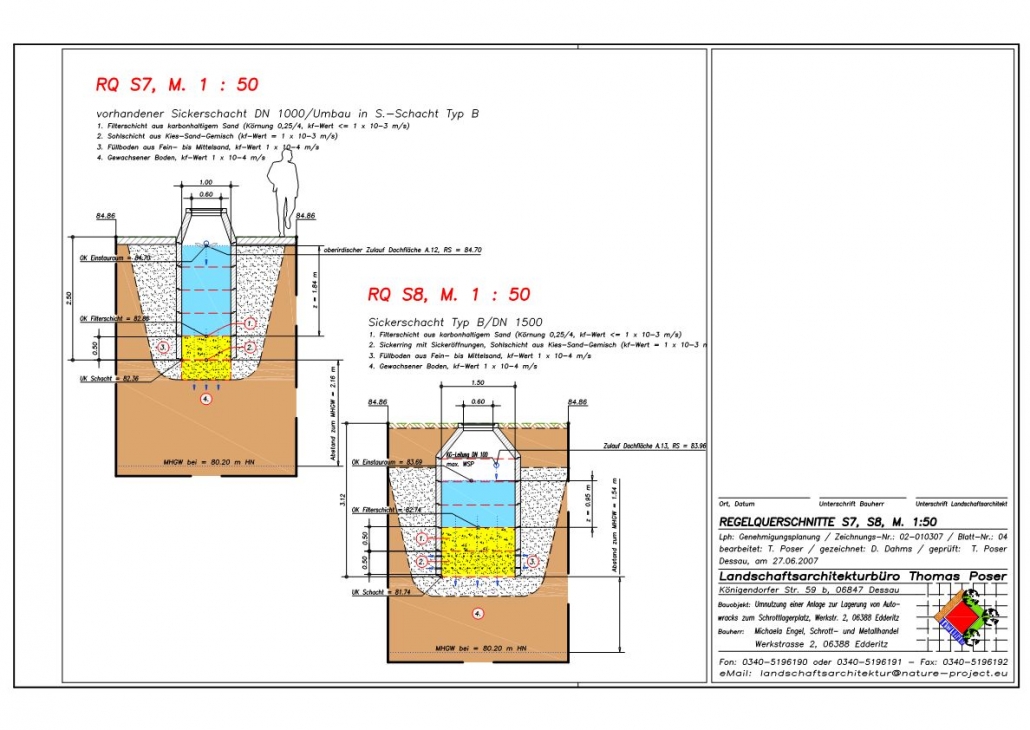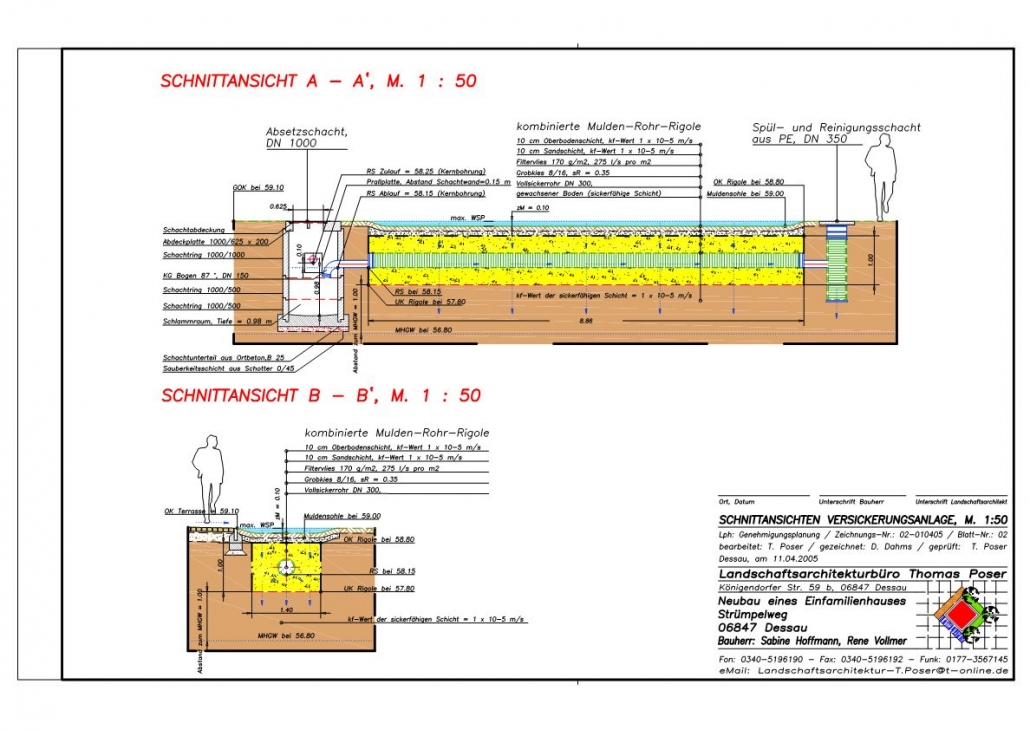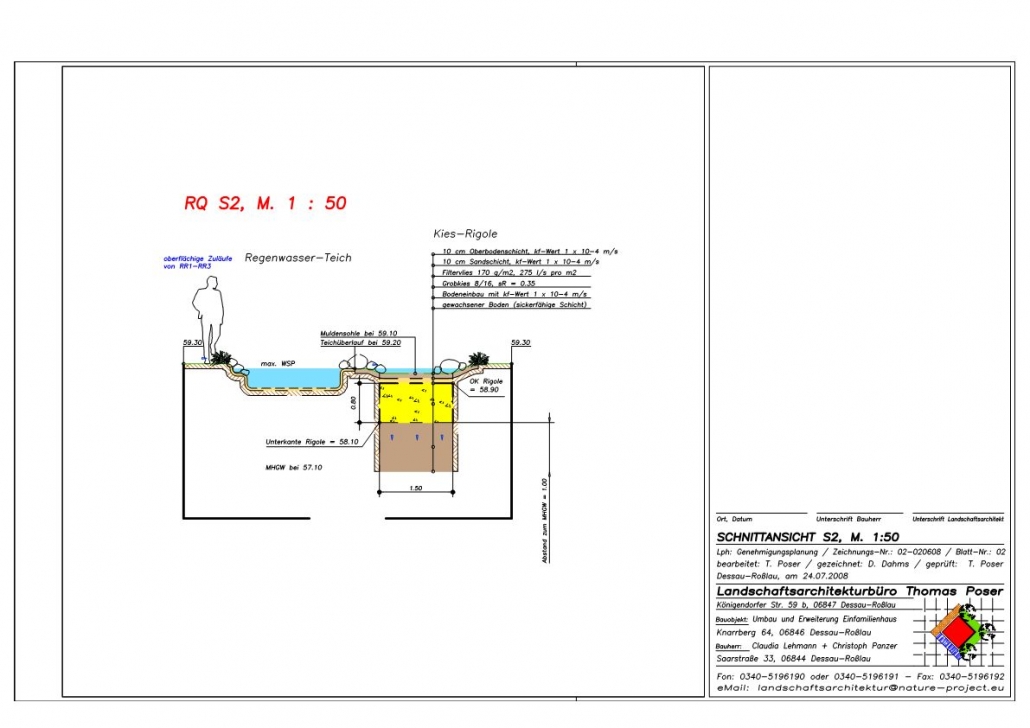In the course of new construction and renovation projects or conversions (e.g. from commercial to private use or vice versa), the submission of a building permit is required.
With the building permit, the development of the property with all necessary media is usually to be proven to the building regulations office.
On the one hand, this affects the sectors of the utility companies, such as electricity, drinking water, gas or district heating and, on the other hand, those of the disposal companies, such as waste water and rainwater.
The rainwater can be disposed of in two different ways, such as connection to the public sewage network or internal infiltration on your own property.
In most areas, the wastewater statutes of the utility companies (municipal utilities or wastewater associations) and the binding land-use planning (for new construction or commercial areas) regulate the type of (rainwater) disposal.
It can happen that the seepage of rainwater on one’s own property due to unfavorable local site conditions, such as insufficient soil permeability (in clay and loam soils), too high groundwater levels (MHGW) or the stocking of contaminated sites (often in the case of revitalized industrial sites) by statute is excluded from the outset.
But this is not the norm. In most cases, the drainage of the accumulating rainwater is desired on one’s own property, as this relieves the public sewer system (especially the mixed water sewers) and promotes the formation of new groundwater.
In places where the soil, water and property conditions permit and no binding prohibition has been laid down in the statutes, we strongly recommend our builders to carry out the property-internal infiltration on their own property, there
In order to be able to infiltrate rainwater on one’s own property, a permit under water law must be obtained in advance, which is issued on the basis of worksheet DWA-A 138 and, in the case of industrial / commercial properties, also according to information sheet ATV-DVWK-M 153 becomes.
The prerequisite for the issuing of the water law permit by the licensing authority is therefore a permit plan corresponding to worksheet DWA-A 138 and information sheet ATV-DVWK-M 153 (also for industrial and commercial properties).
Regulations for the water law permit planning / permit
While the worksheet DWA-A 138 “Planning, construction and operation of systems for the infiltration of rainwater” describes the possible types of infiltration systems and the principles for planning, construction and operation, the ATV-DVWK-M 153 data sheet defines recommendations for action Handling of rainwater “Any necessary pre-treatment with regard to the pollution of the rainwater before the actual infiltration from an ecological point of view.
The relevant prior assessment of the precipitation runoff is carried out here according to the area of origin (e.g. commercial and industrial areas) with a point key and specifies which types of infiltration are permissible and which pre-treatment measures are necessary before the actual infiltration.
The focus of the assessment and the resulting approval capability of systems for rainwater infiltration is thus the “protection of the soil and the groundwater” and thus always the wellbeing of the general public.
To the various infiltration systems
According to worksheet DWA-A 138, the following systems for the infiltration of rainwater have proven themselves in practice:
Infiltration trough (lawn trough)
Shallow (max. 0.3 m depth), shaped terrain basin with temporary above-ground storage (max. 24 h), filling of the infiltration basin, if possible above ground with open feed channels or directly from paved surfaces, extensive infiltration of rainwater via a living soil layer in which Usually topsoil with lawn sowing.
Use restrictions:
Trench element (gravel trench)
Line or area-shaped trenches filled with gravel or other trenches with a high storage capacity, trenches are possible, the trench can be charged above ground with open feed channels or directly from paved areas, intermediate storage of rainwater in the pore volume of the filler material (usually gravel).
Use restrictions:
Trough trench element
System made of a green hollow with an underlying trench,
Feeding of the infiltration basin, if possible above ground with open supply channels or directly from
paved surfaces, extensive infiltration of rainwater through a living soil layer into the trench below, intermediate storage of the rainwater in the pore volume of the filler material of the trench (usually gravel), the aim is to increase the total storage volume compared to the individual systems (trough, trench).
Use restrictions:
Pipe trench element
Line-shaped trenches filled with gravel or other trenches with a high storage capacity, pipe trenches are possible, the pipe trench can be fed underground through a perforated pipe string, intermediate storage of rainwater in the pore volume of the filling material (usually gravel) and in the perforated pipe string, usually upstream a settling shaft (sedimentation system) and a downstream flushing shaft for the retention of sedimentable substances carried along and for cleaning (backwashing) the seepage line.
Use restrictions:
Drainage block element
Trench stacked with plastic drainage modules (usually made of polypropylene), drainage blocks can be linear or flat, the drainage blocks can be charged underground into the open storage space of the drainage modules via KG connections, intermediate storage of rainwater in the open storage space of the drainage modules, usually upstream a settling shaft (sedimentation system) and a downstream ventilation pipe to hold back any sedimentable substances carried along and to ventilate the seepage area, with 95% significantly higher storage capacity than gravel trenches (approx. 35%).
Use restrictions:
Infiltration shaft
Shaft with a permeable base and / or wall for punctiform underground infiltration of precipitation runoff, minimum diameter DN 1000, material concrete or plastic, variants infiltration shaft type A and infiltration shaft type B, retention of settling and filterable substances via a filter bag (type A) and a filter layer made of carbonaceous sand (type A and type B).
Use restrictions:
Trough pipe trench element
System consisting of a green trough with a pipe trench below, feeding of the infiltration trough, if possible above ground with open supply channels or directly from paved surfaces, planar seepage of rainwater through a living soil layer into the pipe trench below, additional direct charging of the pipe trench from underground supply lines via perforated seepage line, underground intermediate storage of rainwater in the pore volume of the filler material of the trench (usually gravel) and in the perforated pipe string, the aim is to increase the total storage volume compared to the individual systems (trough, trench) and the permit-eligible use of a system for qualitatively different rainfall drainages Direct connection of the roof drains to the pipe trench, infiltration of the traffic areas via the lawn hollow).
Use restrictions:
Retention space infiltration
Combination of sealed pond and subsequent infiltration system (lawn hollow, trench or hollow trench element), application for biotope design, construction of fire ponds or for other above-ground rainwater storage with overflow into an infiltration system.
Use restrictions:


